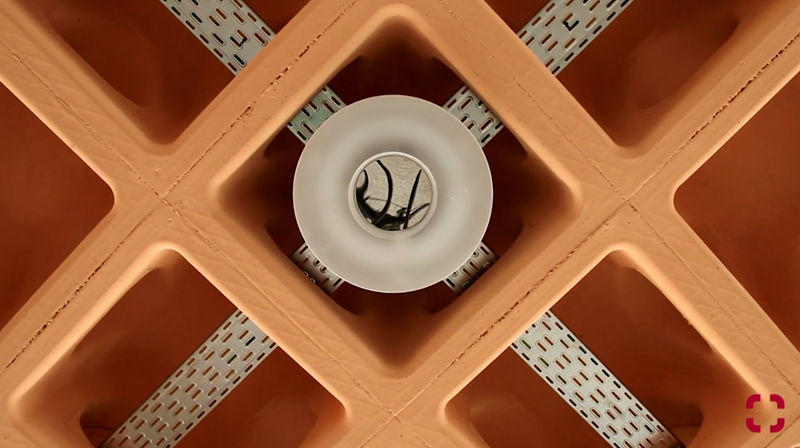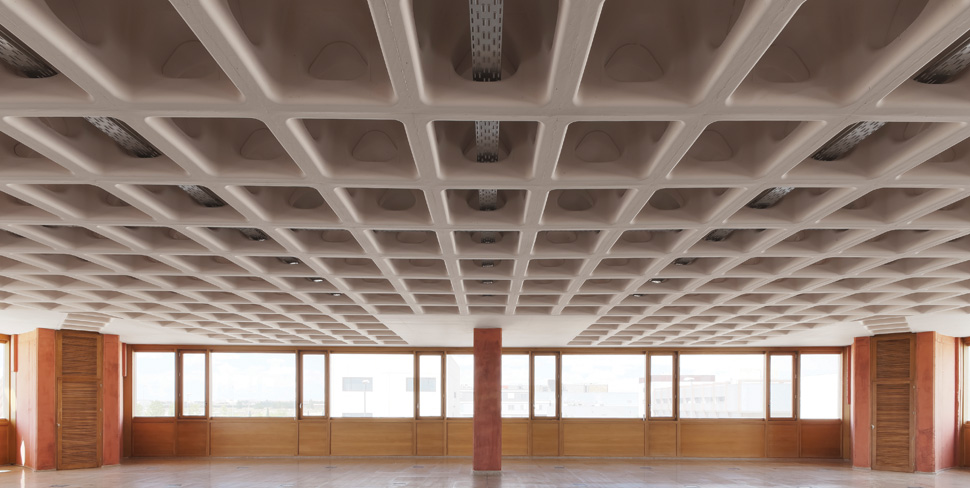The Council on Tall Buildings and Urban Habitat named the winners and finalists of its annual Performance and Innovation Awards
Based on judgment by a prestigious panel of experts, Chiefly Tower in Sydney, Australia snagged this year’s Performance Award, while the Innovation Award went to Spanish manufacturer Holedeck.
Take a look at a more in-depth profile of the winning innovations, as well as a list of the finalists:
Performance Winner
Chiefly Tower, Sydney, Australia
Kohn Pedersen Fox Associates (Architects)
WSP Flack + Kurtz (SE)

The 801-foot tower in downtown Sydney was originally completed in 1992, with 1980s technology. An overhaul was commenced in 2008, where the tower’s key building systems and services were updated to achieve a 4.5 star NABERS Energy Rating.
The CTBUH reports that the project realized a savings of 55 percent in electricity consumption, and reduced its greenhouse gas emissions by 55 percent as well.
Because of all these changes, it was given the Performance Award, which recognizes buildings “that have the least environment impact on the urban realm using measured data,” the CTBUH says, adding that “it is increasingly being recognized that the industry needs to focus on actual ‘performance’ rather than ‘best intentions.’”
“The Technical Awards Jury applauded the efforts to update the energy efficiency of this aging building, both to keep the building competitive with newer structures, as well as addressing critical issues surrounding climate change,” CTBUH says in a statement.
“In a sense, the project gave a ‘new and better life’ to an old asset that was growing less competitive in the market place,” added Ashok Raiji, CTBUH Technical Awards juror and Principal and Mechanical Engineer at Arup.
Innovation Award
HOLEDECK
 Photo courtesy Holedeck via Vimeo
Photo courtesy Holedeck via Vimeo
The system of voided concrete slabs by the eponymous Spanish manufacturer can be pierced through their thickness by electrical and plumbing systems, which drastically reduces the vertical space needed to house these components.
Reducing the necessary height of each floor also means fewer materials are required to achieve the same floor area as a typical high rise building.
As a result, the system was recognized with the Innovation Award, which focuses on “one special area of innovation within the design construction, or operation of the project, not the building overall,” CTBUH says in a statement.
“Holedeck is a simple and elegant way of creating coffer slabs, with holes in the webs. It overcomes one of the main obstacles to the use of coffer slabs, which is that all services usually have to run below the slab rather than in it. It appears to be particularly suitable for light weight long-span floors or where architects and engineers are interested in making better use of the thermal mass of a concrete coffer slab,” noted Technical Awards Jury Chair and Director, Engineering Excellence Group of Laing O’Rourke David Scott. “The jury felt that some of the best innovations come from simple ideas and HOLEDECK could re-energize this form of construction.”
Finalists
Other projects and products that made it to the final round of judging were:
• Façade Access Equipment by Lee Herzog Façade Access Constulting for its work on the Burj Khalifa
Related Stories
| Mar 9, 2011
Winners of the 2011 eVolo Skyscraper Competition
Winners of the eVolo 2011 Skyscraper Competition include a high-rise recycling center in New Delhi, India, a dome-like horizontal skyscraper in France that harvests solar energy and collects rainwater, and the Hoover Dam reimagined as an inhabitable skyscraper.
| Mar 2, 2011
How skyscrapers can save the city
Besides making cities more affordable and architecturally interesting, tall buildings are greener than sprawl, and they foster social capital and creativity. Yet some urban planners and preservationists seem to have a misplaced fear of heights that yields damaging restrictions on how tall a building can be. From New York to Paris to Mumbai, there’s a powerful case for building up, not out.
| Feb 11, 2011
Chicago high-rise mixes condos with classrooms for Art Institute students
The Legacy at Millennium Park is a 72-story, mixed-use complex that rises high above Chicago’s Michigan Avenue. The glass tower, designed by Solomon Cordwell Buenz, is mostly residential, but also includes 41,000 sf of classroom space for the School of the Art Institute of Chicago and another 7,400 sf of retail space. The building’s 355 one-, two-, three-, and four-bedroom condominiums range from 875 sf to 9,300 sf, and there are seven levels of parking. Sky patios on the 15th, 42nd, and 60th floors give owners outdoor access and views of Lake Michigan.
| Feb 11, 2011
Chicago architecture firm planning one of China’s tallest towers
Chicago-based Goettsch Partners was commissioned by developer Guangzhou R&F Properties Co. Ltd. to design a new 294,570-sm mixed-use tower in Tianjin, China. The Tianjin R&F Guangdong Tower will be located within the city’s newly planned business district, and at 439 meters it will be one of China’s tallest buildings. The massive complex will feature 134,900 sm of Class A office space, a 400-key, five-star hotel, 55 condominiums, and 8,550 sm of retail space. The architects are designing the tower with multi-story atriums and a high-performance curtain wall to bring daylight deep into the building, thereby creating deeper lease spans. The project is currently finishing design.
| Dec 17, 2010
Condominium and retail building offers luxury and elegance
The 58-story Austonian in Austin, Texas, is the tallest residential building in the western U.S. Benchmark Development, along with Ziegler Cooper Architects and Balfour Beatty (GC), created the 850,000-sf tower with 178 residences, retail space, a 6,000-sf fitness center, and a 10th-floor outdoor area with a 75-foot saltwater lap pool and spa, private cabanas, outdoor kitchens, and pet exercise and grooming areas.
| Dec 17, 2010
Luxury condos built for privacy
A new luxury condominium tower in Los Angeles, The Carlyle has 24 floors with 78 units. Each of the four units on each floor has a private elevator foyer. The top three floors house six 5,000-sf penthouses that offer residents both indoor and outdoor living space. KMD Architects designed the 310,000-sf structure, and Elad Properties was project developer.
| Dec 17, 2010
Vietnam business center will combine office and residential space
The 300,000-sm VietinBank Business Center in Hanoi, Vietnam, designed by Foster + Partners, will have two commercial towers: the first, a 68-story, 362-meter office tower for the international headquarters of VietinBank; the second, a five-star hotel, spa, and serviced apartments. A seven-story podium with conference facilities, retail space, restaurants, and rooftop garden will connect the two towers. Eco-friendly features include using recycled heat from the center’s power plant to provide hot water, and installing water features and plants to improve indoor air quality. Turner Construction Co. is the general contractor.
| Nov 16, 2010
CityCenter’s new Harmon Hotel targeted for demolition
MGM Resorts officials want to demolish the unopened 27-story Harmon Hotel—one of the main components of its brand new $8.5 billion CityCenter development in Las Vegas. In 2008, inspectors found structural work on the Harmon didn’t match building plans submitted to the county, with construction issues focused on improperly placed steel reinforcing bar. In January 2009, MGM scrapped the building’s 200 condo units on the upper floors and stopped the tower at 27 stories, focusing on the Harmon having just 400 hotel rooms. With the Lord Norman Foster-designed building mired in litigation, construction has since been halted on the interior, and the blue-glass tower is essentially a 27-story empty shell.
| Nov 3, 2010
Rotating atriums give Riyadh’s first Hilton an unusual twist
Goettsch Partners, in collaboration with Omrania & Associates (architect of record) and David Wrenn Interiors (interior designer), is serving as design architect for the five-star, 900-key Hilton Riyadh.
| Oct 13, 2010
Modern office design accentuates skyline views
Intercontinental|Exchange, a Chicago-based financial firm, hired design/engineering firm Epstein to create a modern, new 31st-floor headquarters.
















